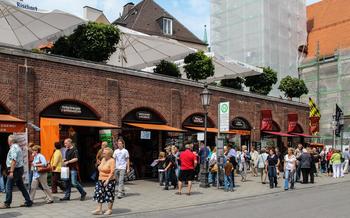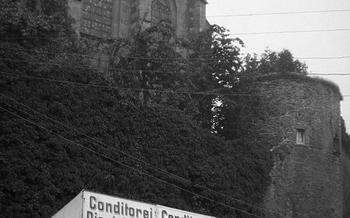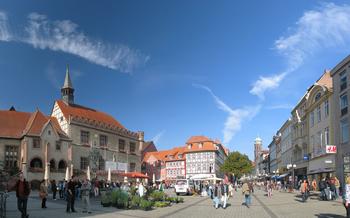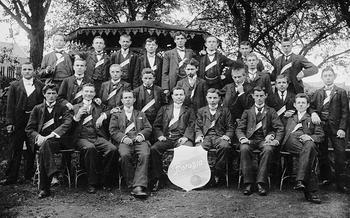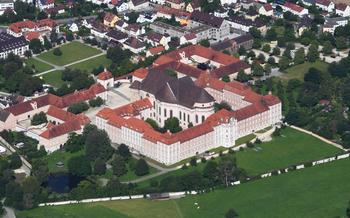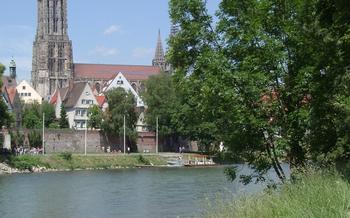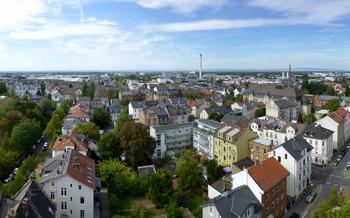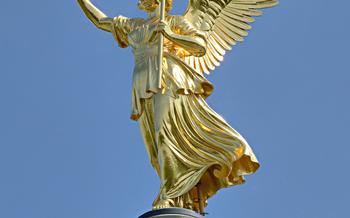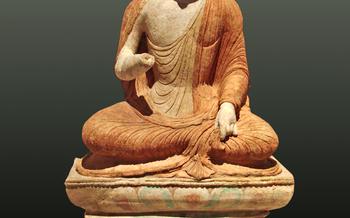
European Bread Museum
- Bread Culture in Germany
- Exhibits at the European Bread Museum
- Learning about Bread Production
- Taste and Smell of Bread
- The Role of Bread in Art and Culture
- Symbolic Meaning of Bread in Different Cultures
- Bread as a Theme in Festivals and Celebrations
- Bread-Related Traditions and Customs
- The Future of Bread
- Hands-On Activities for Kids
- The Museum Shop
- Accessibility for Visitors with Disabilities
- Photography and Videography
- Food and Beverages
- Souvenirs and Gifts
- Educational Programs
- Insider Tip
Bread Culture in Germany
Bread holds a special place in German cuisine, with a rich history and diverse regional variations. Germans consume a wide variety of breads, from hearty rye breads to lighter wheat rolls. Each region has its own specialties, reflecting local ingredients and traditions.
Traditional German bread-making methods often involve sourdough fermentation, which gives the bread a distinctive sour flavor and a longer shelf life. German bakers take great pride in their craft, using high-quality ingredients and following time-honored recipes.
The significance of bread in German culture is evident in the many bread festivals and events held throughout the country. The "Brotmarkt" (Bread Market) in Ulm, for example, is a centuries-old tradition that attracts thousands of visitors each year. Bread festivals celebrate the cultural and culinary heritage of bread, offering a chance to sample different varieties and learn about the history of bread-making.
Exhibits at the European Bread Museum
The European Bread Museum offers a diverse range of exhibits that provide a comprehensive insight into the world of bread. Interactive displays allow visitors to learn about the history of bread-making, the science behind the process, and the cultural significance of bread.
Visitors can explore historical artifacts related to bread production, such as ancient ovens, baking tools, and storage containers. The museum also houses a collection of bread from around the world, showcasing the diverse flavors, textures, and shapes of bread from different cultures.
The museum's highlight is the live baking demonstrations and workshops, where visitors can witness the art of bread-making firsthand and even participate in the process. Skilled bakers demonstrate traditional bread-making techniques, using fresh, natural ingredients to create delicious loaves of bread.
Learning about Bread Production
The European Bread Museum provides an in-depth look into the science and craft of bread production. Visitors can learn about the different stages of bread production, from the cultivation of grains to the baking of the final loaf. Interactive exhibits allow visitors to explore the role of different ingredients in bread, such as flour, water, yeast, and salt. They can also witness the transformation of dough into bread through hands-on bread-making activities.
The museum's exhibits delve into the chemistry and biology of bread-making, explaining how yeast ferments sugars in the dough to produce carbon dioxide gas, which causes the dough to rise. Visitors can also learn about the different types of flour used in bread-making, such as wheat flour, rye flour, and spelt flour, and how they affect the texture and flavor of the final product.
The museum also offers demonstrations and workshops where visitors can observe professional bakers at work and learn how to make their own bread. These workshops provide a unique opportunity to gain hands-on experience in the art of bread-making and to create delicious, fresh bread to take home.
Taste and Smell of Bread
At the European Bread Museum, visitors have the opportunity to sample different types of bread and understand the sensory qualities that make each one unique. Interactive exhibits allow visitors to explore the taste and smell of bread, learning about the factors that influence these qualities.
Visitors can sample a variety of breads from around the world, each with its own distinct flavor and texture. Guided tours and workshops provide insights into the different ingredients and techniques used in bread-making, helping visitors to understand how these factors contribute to the taste and smell of the final product.
The museum also features interactive exhibits that allow visitors to explore the role of smell in bread appreciation. Visitors can learn about the different compounds that contribute to the aroma of bread, and how these compounds interact with the taste buds to create a complex and enjoyable sensory experience.
The Role of Bread in Art and Culture
Bread has played a significant role in art and culture throughout history. In paintings, sculptures, and literature, bread has been depicted as a symbol of life, nourishment, and sustenance. In many cultures, bread is seen as a sacred food, and its consumption is associated with religious rituals and festivals.
Symbolic Meaning of Bread in Different Cultures
In Christianity, bread is a symbol of the body of Christ, and the breaking of bread is a central part of the Eucharist. In Judaism, bread is a symbol of life and plenty, and is eaten during the Passover seder. In Islam, bread is seen as a gift from God, and is often shared with others as a sign of hospitality.
Bread as a Theme in Festivals and Celebrations
Bread is a central part of many festivals and celebrations around the world. In Germany, the annual Göttingen Bread Festival celebrates the history and culture of bread. In France, the Fête du Pain is a celebration of bread and baking, and features parades, competitions, and exhibitions. In Italy, the Festa del Pane is a religious festival that celebrates the harvest and the baking of bread.
Bread-Related Traditions and Customs
Many cultures have bread-related traditions and customs. In some parts of Germany, it is customary to bake a special bread for Christmas, called Weihnachtsstollen. In Greece, bread is often broken over the heads of newlyweds as a symbol of good luck. In India, bread is often used as an offering to the gods.
The Göttingen Bread Museum offers a unique opportunity to learn about the role of bread in art and culture. Through interactive exhibits, historical artifacts, and demonstrations, the museum provides visitors with a deeper understanding of the significance of bread in human history.
The Future of Bread
The European Bread Museum delves into the evolving landscape of bread consumption and production. It explores trends shaping the future of bread, including the rise of artisan bakeries, the growing demand for specialty breads, and the increasing focus on sustainability.
The museum highlights the challenges facing the bread industry, such as competition from large-scale producers, the rising cost of ingredients, and the impact of climate change on wheat production. It also showcases innovations in bread production, such as the use of alternative grains, the development of new baking techniques, and the exploration of novel bread products.
Furthermore, the museum emphasizes the role of bread in sustainable food systems. It promotes the importance of local sourcing, reduced food waste, and environmentally friendly baking practices. The museum also encourages visitors to reflect on their own bread consumption habits and to make conscious choices that support sustainable bread production.
Hands-On Activities for Kids
The European Bread Museum offers a range of interactive exhibits and activities designed to engage and educate children about the world of bread. Kids can explore the museum's many hands-on displays, which allow them to learn about the science of bread-making, the different ingredients used in bread, and the various stages of bread production. They can also participate in baking workshops, where they can get hands-on experience in creating their own delicious bread creations.
The museum also offers educational programs for school groups, which can be tailored to different age groups and curriculum needs. These programs provide students with a comprehensive understanding of bread culture, from its history and significance to its role in art, literature, and other aspects of human culture.
To make the museum experience even more enjoyable for children, there is a dedicated kids' corner with interactive games, puzzles, and activities related to bread. This area provides a fun and educational space for kids to learn about bread while having a great time.
The Museum Shop
The European Bread Museum's gift shop is a treasure trove for bread enthusiasts and souvenir hunters alike. Visitors can browse a wide selection of freshly baked breads from local bakeries, ensuring that the taste of Göttingen's bread culture can be savored long after their visit.
The shop also offers a delightful array of bread-related souvenirs and gifts, from charming keychains and magnets to tea towels and aprons. Visitors can choose from a variety of books on bread culture and baking, providing an opportunity to delve deeper into the fascinating world of bread. For those who wish to recreate the magic of bread-making at home, the shop stocks a range of traditional baking tools and equipment, ensuring that visitors can continue their bread-making journey beyond the museum walls.
Accessibility for Visitors with Disabilities
The European Bread Museum is committed to ensuring that all visitors, including those with disabilities, have a fulfilling and enjoyable experience. The museum is wheelchair accessible, with ramps and elevators providing access to all floors. Special programs are offered for visitors with disabilities, including guided tours with sign language interpretation and audio guides that provide detailed descriptions of the exhibits. Assistive devices such as wheelchairs and magnifying glasses are available upon request. Designated parking spaces are reserved for visitors with disabilities, located close to the museum entrance. The museum staff is always willing to assist visitors with disabilities, ensuring that they have a comfortable and informative visit.
Photography and Videography
Visitors are welcome to take photos and videos for personal use within the European Bread Museum. However, using a flash or tripod is not permitted. For commercial photography or videography, prior permission must be obtained from the museum administration. It is essential to respect the privacy of other visitors and refrain from taking photos or videos of them without their consent. Visitors are encouraged to share their experiences on social media using the designated hashtags, allowing others to discover the wonders of the museum.
Food and Beverages
The European Bread Museum offers a variety of dining options to satisfy the hunger of its visitors. For a quick bite, the museum's cafeteria serves a selection of sandwiches, salads, and pastries, along with hot and cold beverages. Those who prefer to enjoy their own packed lunch can take advantage of the designated picnic area, offering a relaxing spot to savor a homemade meal surrounded by the tranquil museum grounds. For those in need of a caffeine fix or a sweet treat, vending machines are conveniently located throughout the museum, offering a variety of snacks and drinks to satisfy cravings. For a more extensive dining experience, visitors can venture outside the museum to explore the numerous restaurants and cafes in the surrounding area, offering a wide range of cuisines to suit every taste and budget.
Souvenirs and Gifts
The European Bread Museum gift shop is a treasure trove of bread-related souvenirs and gifts. From traditional baking tools and equipment to unique souvenirs commemorating a visit to the museum, there is something for everyone. Visitors can find a wide selection of items, including:
- Bread-making kits: Complete with all the necessary ingredients and instructions, these kits allow visitors to recreate the bread-making experience at home.
- Baking books: The museum shop offers a variety of books on bread culture and baking, from beginner-friendly guides to advanced baking techniques.
- Bread-themed gifts: From bread-shaped magnets and keychains to tea towels and aprons, there are plenty of fun and practical gifts to choose from.
- Local specialties: The museum shop also sells a selection of breads from local bakeries, allowing visitors to take a taste of Göttingen home with them.
Whether you're looking for a unique gift for a friend or family member or a special souvenir to remember your visit, you're sure to find something to your liking at the European Bread Museum gift shop.
Educational Programs
The European Bread Museum offers a range of educational programs designed to deepen visitors' understanding of bread culture and baking. These programs cater to diverse audiences, from curious individuals to students and professionals in the food industry.
Workshops and Classes: Hands-on workshops and classes provide participants with the opportunity to learn the art of bread making under the guidance of experienced bakers. These sessions cover various aspects of bread making, from selecting the right ingredients to kneading, shaping, and baking. Participants get to experiment with different recipes and techniques, creating their own delicious loaves of bread to take home.
Lectures and Presentations: The museum regularly hosts lectures and presentations by renowned experts in bread culture. These events delve into various topics related to bread, such as its history, cultural significance, and nutritional value. Guest speakers share their insights and research findings, offering attendees a deeper understanding of the world of bread.
School Programs: Tailored educational programs are available for school groups of all ages. These programs aim to introduce students to the science and culture of bread through interactive activities and demonstrations. Students learn about the different stages of bread production, the role of different ingredients, and the importance of bread in various cultures.
Internships and Research Projects: The museum offers internship and research opportunities for individuals passionate about bread culture and baking. Interns gain hands-on experience in various aspects of museum operations, including research, exhibition development, and educational programming. Research projects provide opportunities to explore specific topics related to bread in depth, contributing to the museum's knowledge base.
Insider Tip
If you happen to be in Göttingen during the annual Göttingen Bread Festival, make sure to visit the European Bread Museum as well. The festival, which takes place in August, is a celebration of all things bread, with bakers from all over the region showcasing their finest creations. You'll have the opportunity to sample different types of bread, watch live baking demonstrations, and learn more about the history and culture of bread. It's a great way to experience the vibrant bread culture of Germany and to get a taste of the region's culinary delights.
